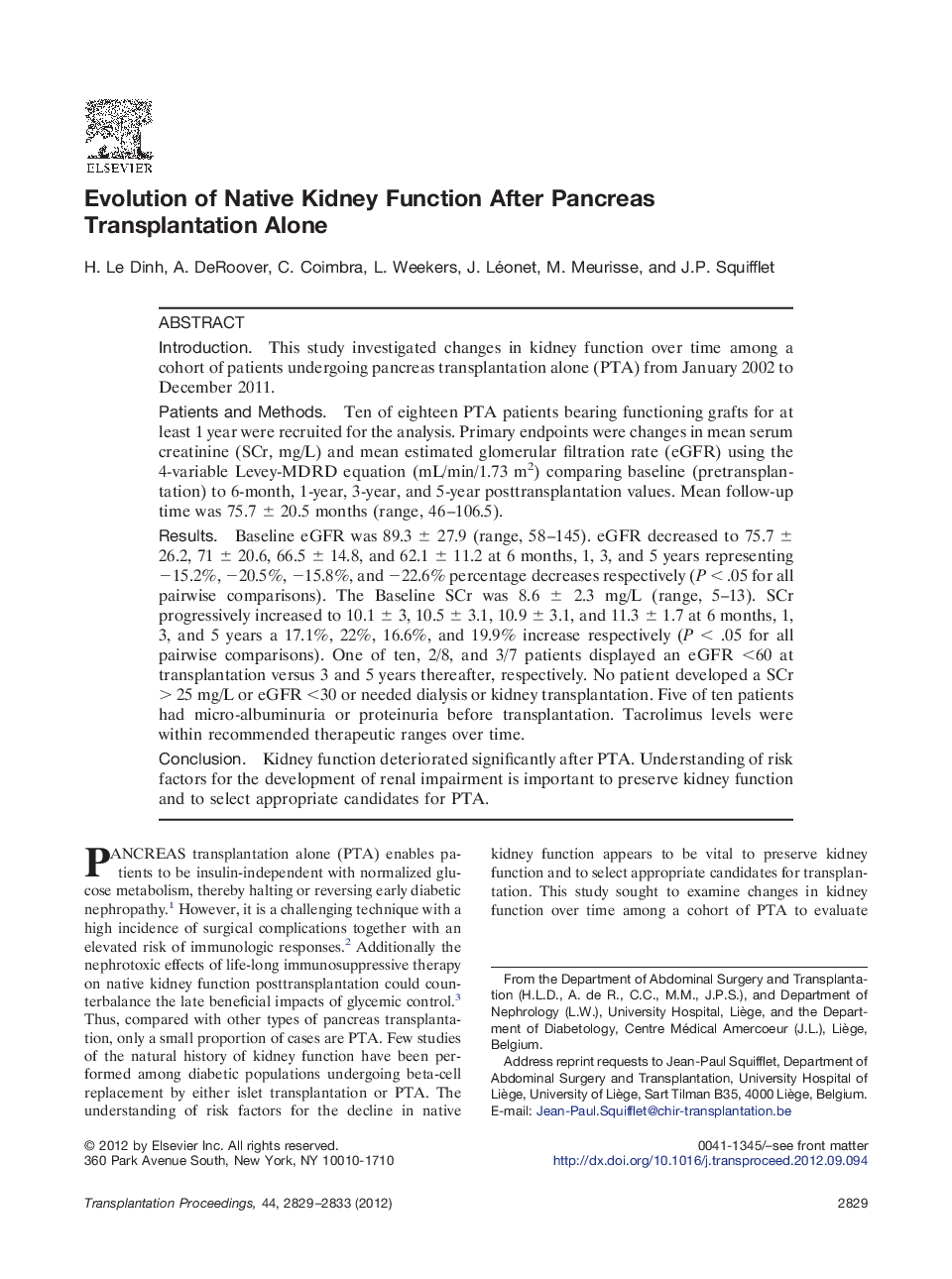| Article ID | Journal | Published Year | Pages | File Type |
|---|---|---|---|---|
| 4256337 | Transplantation Proceedings | 2012 | 5 Pages |
IntroductionThis study investigated changes in kidney function over time among a cohort of patients undergoing pancreas transplantation alone (PTA) from January 2002 to December 2011.Patients and MethodsTen of eighteen PTA patients bearing functioning grafts for at least 1 year were recruited for the analysis. Primary endpoints were changes in mean serum creatinine (SCr, mg/L) and mean estimated glomerular filtration rate (eGFR) using the 4-variable Levey-MDRD equation (mL/min/1.73 m2) comparing baseline (pretransplantation) to 6-month, 1-year, 3-year, and 5-year posttransplantation values. Mean follow-up time was 75.7 ± 20.5 months (range, 46–106.5).ResultsBaseline eGFR was 89.3 ± 27.9 (range, 58–145). eGFR decreased to 75.7 ± 26.2, 71 ± 20.6, 66.5 ± 14.8, and 62.1 ± 11.2 at 6 months, 1, 3, and 5 years representing −15.2%, −20.5%, −15.8%, and −22.6% percentage decreases respectively (P < .05 for all pairwise comparisons). The Baseline SCr was 8.6 ± 2.3 mg/L (range, 5–13). SCr progressively increased to 10.1 ± 3, 10.5 ± 3.1, 10.9 ± 3.1, and 11.3 ± 1.7 at 6 months, 1, 3, and 5 years a 17.1%, 22%, 16.6%, and 19.9% increase respectively (P < .05 for all pairwise comparisons). One of ten, 2/8, and 3/7 patients displayed an eGFR <60 at transplantation versus 3 and 5 years thereafter, respectively. No patient developed a SCr > 25 mg/L or eGFR <30 or needed dialysis or kidney transplantation. Five of ten patients had micro-albuminuria or proteinuria before transplantation. Tacrolimus levels were within recommended therapeutic ranges over time.ConclusionKidney function deteriorated significantly after PTA. Understanding of risk factors for the development of renal impairment is important to preserve kidney function and to select appropriate candidates for PTA.
